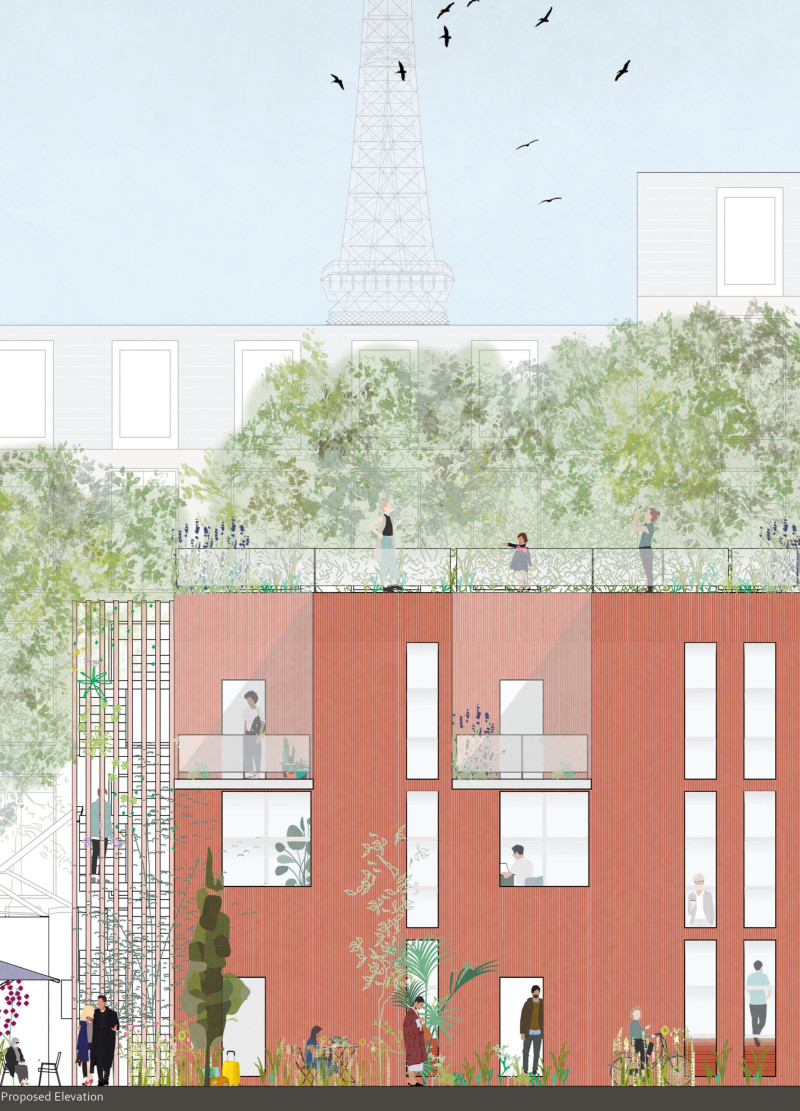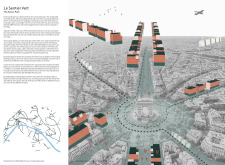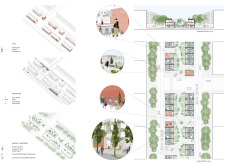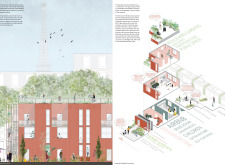5 key facts about this project
The project encompasses two distinctive housing typologies: a two-house and a three-house configuration. This modular design approach enables flexibility, catering to various demographic needs, including multigenerational families. Each unit features private garden space, facilitating a connection to nature within the urban framework. The design emphasizes shared public areas, integrating gardens and pedestrian pathways that foster social interaction and contribute to community cohesion.
Sustainable Material Usage and Environmental Considerations
A notable feature of “Le Sentier Vert” is its commitment to sustainability through careful material selection. The use of cross-laminated timber (CLT) as a primary construction material promotes ecological responsibility due to its renewable nature and reduced carbon footprint. Metal cladding provides a modern aesthetic while ensuring durability and low maintenance. Additionally, integrated landscapes, featuring trees and plants, enhance biodiversity and improve air quality, addressing urban heat island effects.
The design’s approach to urban landscape integration further differentiates it from conventional housing projects. By including communal greenspaces and ensuring accessibility to existing transport infrastructure, such as tram lines and cycling routes, the project promotes sustainable transportation and reduces reliance on cars. This focus on connectivity and walkability creates a more accessible urban environment conducive to community engagement.
Innovative Residential and Public Space Integration
“Le Sentier Vert” stands out due to its innovative integration of residential and public space. The design encourages a seamless flow between private and public areas, with shared amenities that enhance the living experience. Features such as public gardens and pedestrian pathways are thoughtfully incorporated to promote social interaction among residents. This not only enriches the community experience but also aligns with contemporary urban planning principles focused on livability.
Furthermore, the project incorporates diverse uses within its design framework, integrating commercial spaces with residential areas. This multifaceted approach not only supports local economies but also contributes to a dynamic urban environment. By prioritizing affordability and inclusivity, “Le Sentier Vert” effectively addresses Paris’s ongoing housing challenges while enhancing the quality of urban life.
For those interested in exploring this architectural project further, detailed architectural plans, sections, and designs provide deeper insights into the innovative ideas and functional aspects of “Le Sentier Vert.” The project exemplifies a thoughtful approach to urban living, setting a standard for future architectural developments in densely populated areas.


























